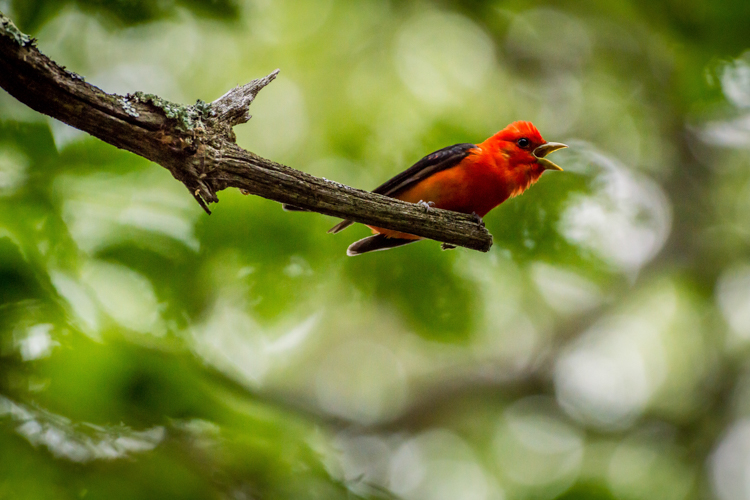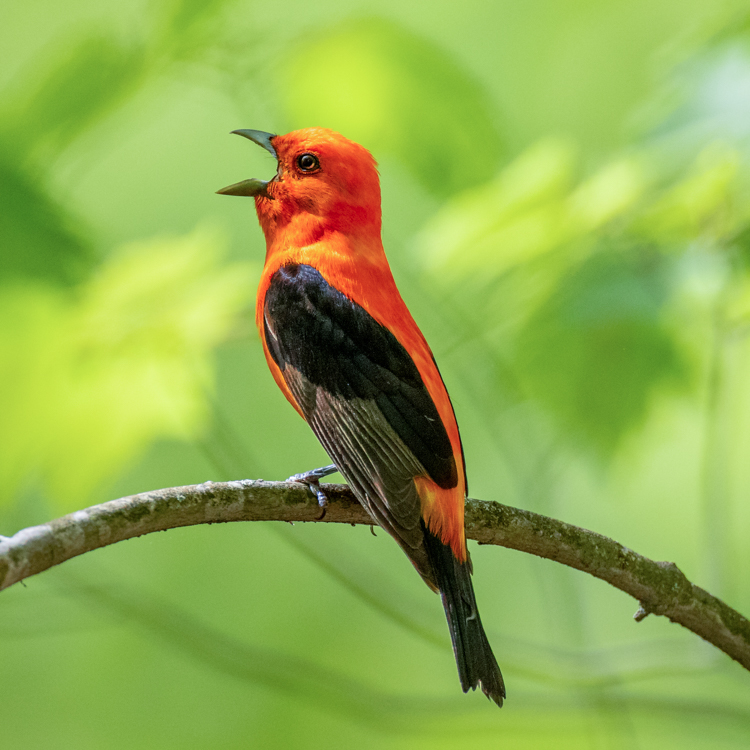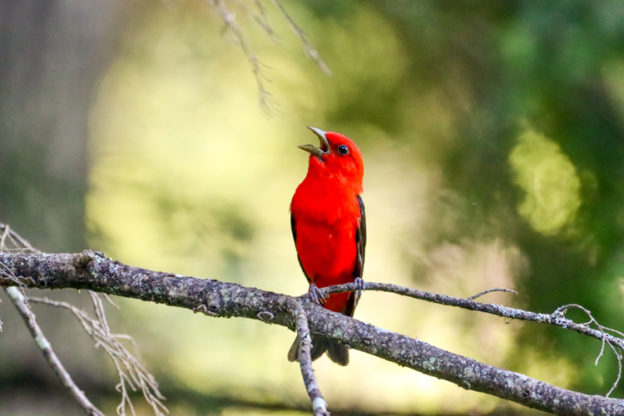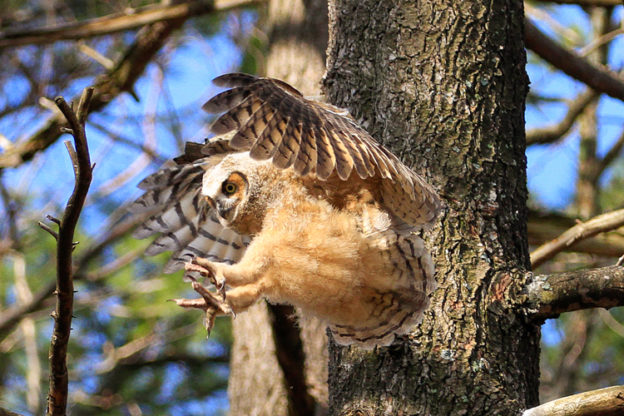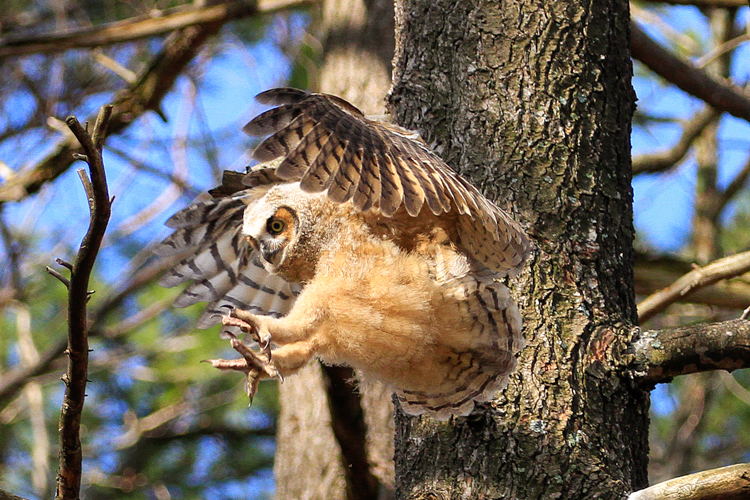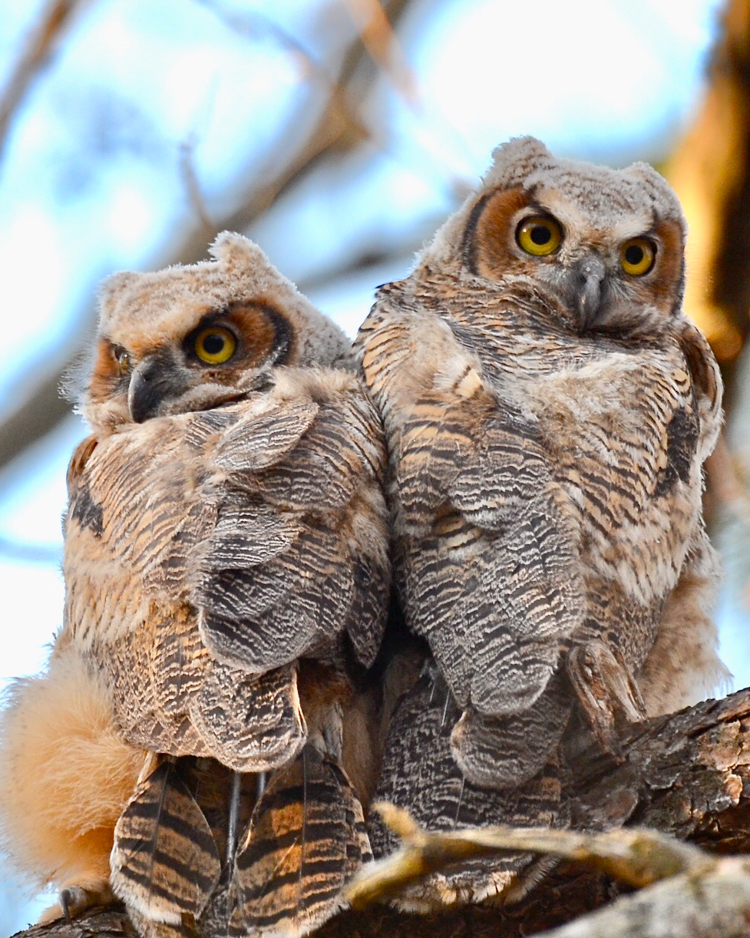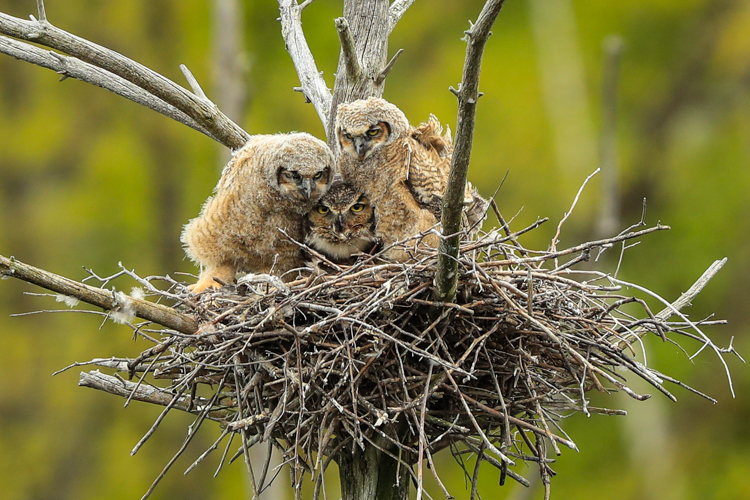A bird as brilliantly colored as the Scarlet Tanager might seem at first to be impossible to overlook. But as it happens, this vibrant forest bird is improbably gifted at evading the birder’s eye, even as it moves sluggishly about the forest canopy, singing its hoarse song as it searches for caterpillars to eat.
During spring migration and summer, look for a flash of red up high in the canopy of mature deciduous forests for a chance to spy a male Scarlet Tanager. The females will be even trickier to spot—this species is sexually dimorphic, so the yellowish-green females are significantly less vibrant than breeding-season males, although the males’ brilliant plumage fades to yellowish-green in the fall and winter.
To somewhat more easily identify both males and females, listen for the loud, distinctive chick-burrr call given by both sexes. Their song is similar to a robin’s, but with a raspier tone.
Enjoy these five photos of Scarlet Tanagers from our annual Picture This: Your Great Outdoors photo contest and let us know in the comments if you’ve been lucky enough to spot a Tanager in your area. The 2021 photo contest opens in early June, so keep an eye out for the announcement!

